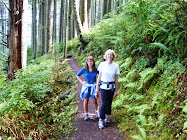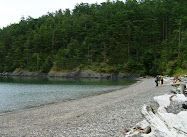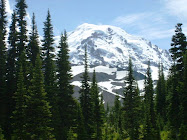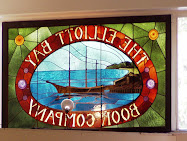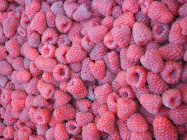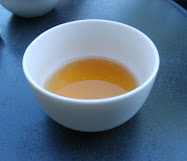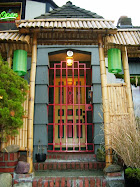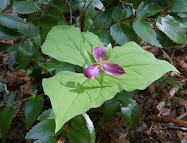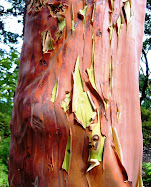Sure, warmth and sunshine are nice, but think that's going to stop some of us Northwesterners from getting out? We just pull on our rain gear and layer up in long undies, fleece, and Gore-tex or other water-repellent fabrics and waterproof our boots. When I'm not skiing on winter weekends, sometimes I take to the trail at lower elevations.
Last Saturday on Orcas Island for the weekend, I joined some friends who live on the island for an easy 4-mile hike around Mountain Lake in Moran State Park. My friend Steve says in the summer you could easily encounter 50 to 60 other hikers on the loop, but we passed just two with their dogs. (Earlier in the day the park trails were host to scores of Rainshadow Runners for an annual 25K trail running event. But that's the exception.)
To get some extra mileage, Steve and I started about a mile lower at the Cascade Falls trailhead. As we walked the sometimes muddy trail along swollen Cascade Creek, Steve told me an interesting factiod: "Cascade Creek is the only year-round natural stream in the San Juan Islands."
 | |||
| Cascade Creek below Mountain Lake |
 |
| A little mud never hurt anyone, right? |
As we ascended higher, the rain subsided and a heavy mist permeated the forest. By the time we emerged into a clearing at the base of Mountain Lake, visibility was only about 30 feet. I found the effect magical, and I couldn't stop taking pictures of the misty lake.
Steve and Susan tell me I have to come back in the summer on a nice day to see the views across the lake and higher up Mt. Constitution. But that's months away, and on this day the rain and mist were lovely.
Besides obscuring the views and softening the edges of the lake, the mist added a velvety backdrop to the forest.
Overall the hike was pleasant and fairly level, with mild elevation gains and losses as it meandered through the forest and around the lake. Even after about 6 miles with the extra leg from Cascade Creek below, I didn't get tired but rather, invigorated.
Do you have a favorite winter hike? We'd love to hear in the comments below!
When You Go
Here is a map of Moran State Park, which shows Mountain Lake and other trails. Here's a link to a great brochure about Moran State Park, which describes 11 other hikes in the park, ranging from flat and easy to the challenging trek up 2,409-foot Mt. Constitution. The park is about 14 miles from the ferry terminal on Orcas, but remember that you're traveling on two-lane roads with a maximum speed limit of 40 mph. Also remember to make sure your Washington State Discover Pass is visible in your car for parking in the park.
























































